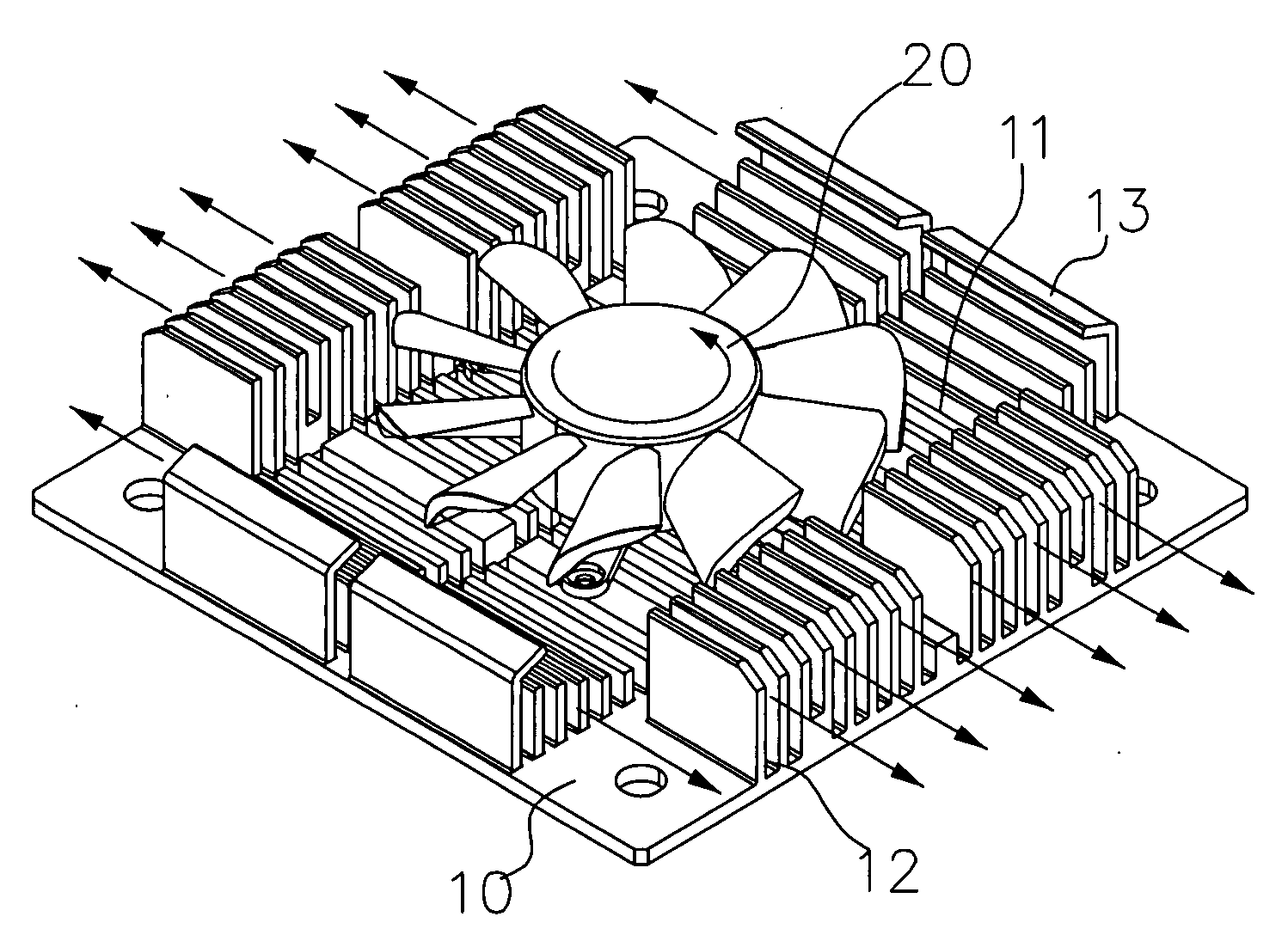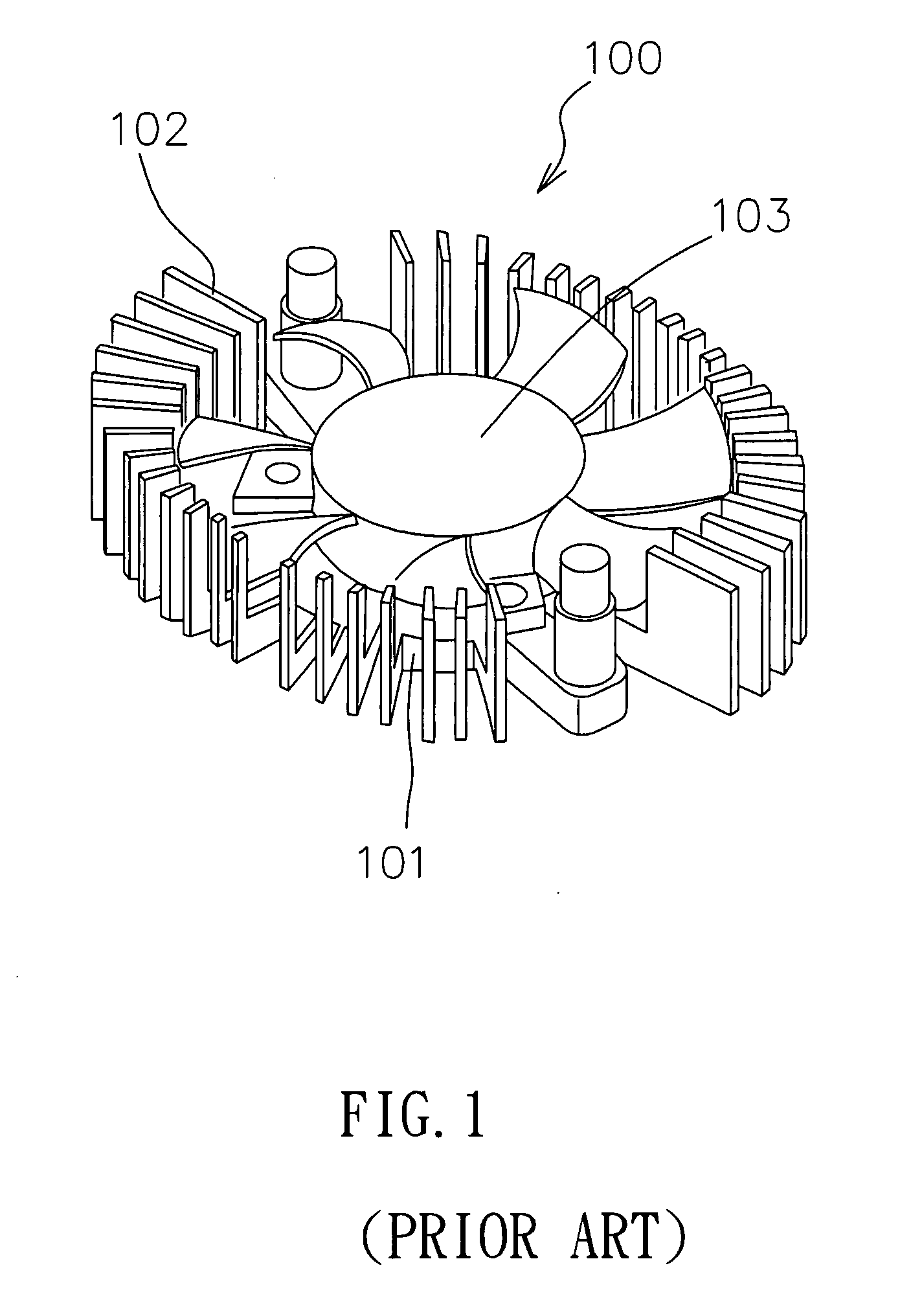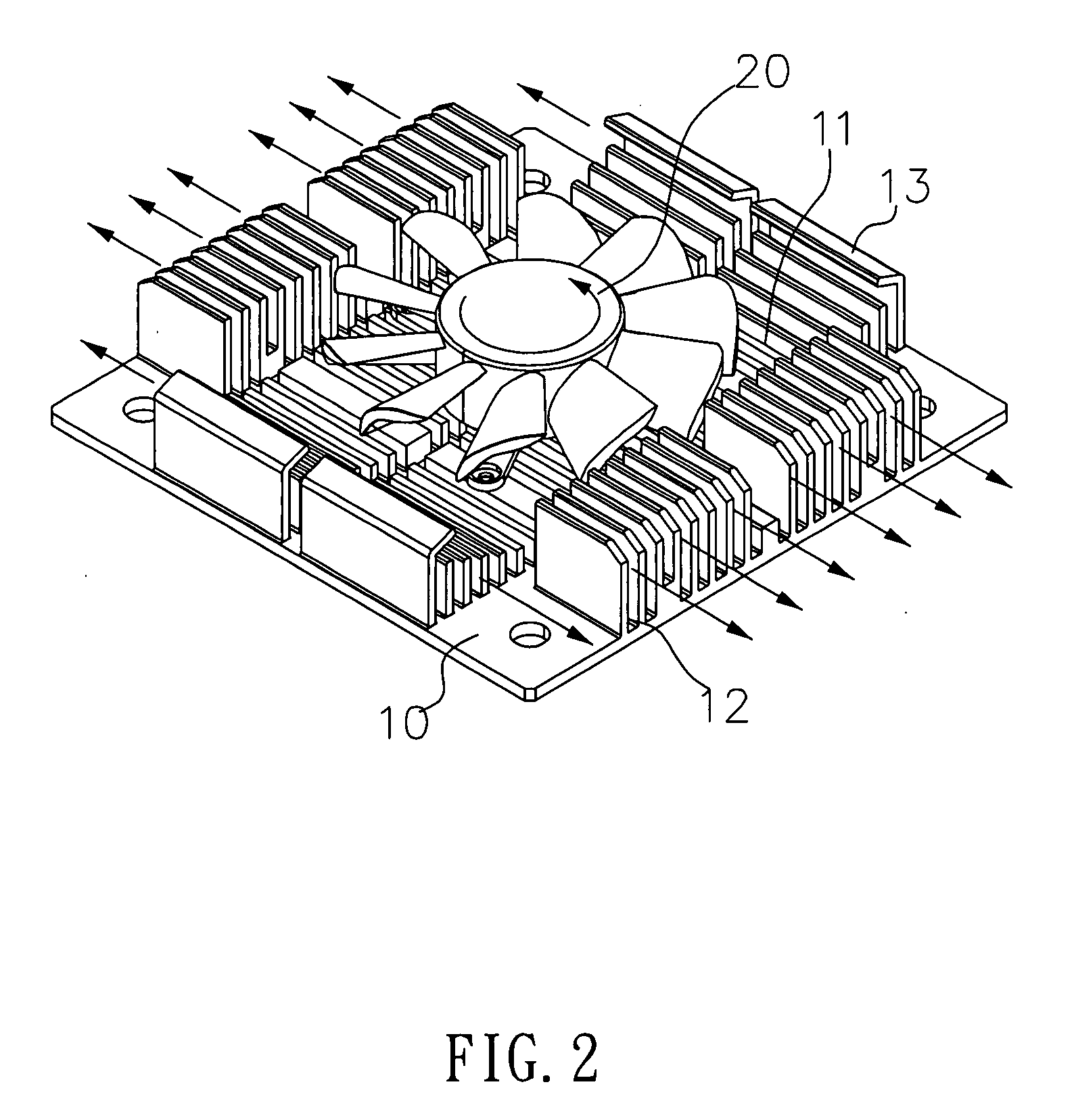Heat dissipating module
a technology of heat dissipation module and heat dissipation module, which is applied in the direction of fluid heaters, air heaters, light and heating apparatus, etc., can solve the problems of high cost, inability to close to the fan, and blocked outside air by the fins, so as to increase the airflow and heat dissipation area, reduce the risk of mold development, and reduce the effect of heat loss
- Summary
- Abstract
- Description
- Claims
- Application Information
AI Technical Summary
Benefits of technology
Problems solved by technology
Method used
Image
Examples
Embodiment Construction
[0014]To make it easier for our examiner to understand the technical characteristics of the invention, we use preferred embodiments together with the attached drawings for the detailed description of the invention.
[0015]Referring to FIGS. 2 to 4 for a heat dissipating module in accordance with the present invention, the heat dissipating module is applied to a low-level chip (such as a multimedia processor, a Southbridge chip and a Northbridge chip, etc) for dissipating the heat produced by the low-level chip, and the heat dissipating module has a base 10 made by an aluminum extrusion process, and the base 10 in this embodiment is a rectangular base. The base 10 has a recession 11, and the surface of the recession 11 has a plurality of protrusions for increasing the heat dissipating area, and the recession 11 is provided for precisely containing a fan 20, and two corresponding edges of the base 10 separately have a first fin module 12, and the first fin module 12 is comprised of orde...
PUM
 Login to View More
Login to View More Abstract
Description
Claims
Application Information
 Login to View More
Login to View More - R&D
- Intellectual Property
- Life Sciences
- Materials
- Tech Scout
- Unparalleled Data Quality
- Higher Quality Content
- 60% Fewer Hallucinations
Browse by: Latest US Patents, China's latest patents, Technical Efficacy Thesaurus, Application Domain, Technology Topic, Popular Technical Reports.
© 2025 PatSnap. All rights reserved.Legal|Privacy policy|Modern Slavery Act Transparency Statement|Sitemap|About US| Contact US: help@patsnap.com



